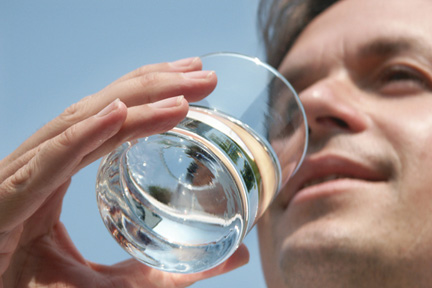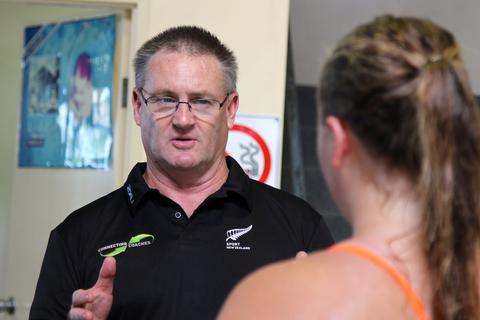Beer Battles: Blowing the Froth off Football.

Alcohol and football are hot topics right now: that’s nothing new – they have been hot topics since both were invented.
In the beginning…..
When Aristotle and Plato ran out to play a quick game of soccer in between philosophy and mathematics lessons a few thousand years ago, they were both probably subject to team alcohol policies and had been through the Athenian Football Association’s “Football Alcohol Management Education” Training Program (or F.A.M.E. for short).
Codes, Clubs, Committees and Coaches have been struggling to figure out what’s the best way to deal with the issues of players, performance and the p..s for a long time.
Why do players say they have to drink?
- “It’s part of the culture of the sport” – there are a lot of football “crimes” committed in the name of “our culture”. So what the players are really saying is “our culture is about getting smashed, acting like imbeciles and getting into trouble more than it is about winning games, titles and premierships”.
- “It helps me relax after a game”– modern football in all codes is televised warfare with coloured jerseys instead of battle fatigues and pom poms instead of bullets – it is tough, hard, dangerous and we all love to see big, bad boys bashing and brawling in battle conditions! However, how much relaxation do you need? The rest of the world seems to do OK with a couple of glasses of red and some nice music. Why does putting on a Club strip mean you need 56 beers, two bottles of brandy, some Tequila and a case of Baileys to unwind?
- “It helps us bond as a team” – if training, travelling, sweating, working hard, lifting weights and playing together 20 hours a week for 10 months doesn’t bring people together how does throwing down a few cases of cans make a difference?
- “We’ve always had a beer together after a Game – it’s who we are at this Club” – everyone loves a couple of quick ones with friends, family and fans after a tough, tight game – but how does such a positive social experience deteriorate into mayhem so often? If having a beer is “who we are” then trade in the football posts for a few bars stools and a couple of beer taps and open a pub.
The fundamental reason many players regularly drink to excess is that most players prefer Popularity to Performance – they know the grog impacts on their capacity to train, prepare, play and recover – there is no denying it any more than denying a pack of smokes a day causes lung cancer – but the effort to say “NO” – and all it entails is just too tough.
So what has been tried?
There have been as many different ways of dealing with froth and footy as there are brands of boutique ale – here are some of the most common approaches:
The “No one drinks on my watch: Total Prohibition” approach:
- Pros: Great – right now this is what 2 billion football fans are all screaming for but…
- Cons: Prohibition has not worked in any society since Caesar tried to limit the consumption of wine the night before Chariot races – and it will NOT work in football in this century either.
The “Have a few, boys – but not too many” approach:
- Pros: Seems like a smart idea – putting limits on the amount of alcohol players can consume but…
- Cons: What is “a few” to one player may be “a few too many” to another.
The “It’s OK to drink as long as no one finds out about it” approach:
- Pros: Organising to have a few quiet drinks away from the prying eyes of fans, mobile phone cameras and Nosey Journalists might seem like a great idea but….
- Cons: Just because no one saw it happen, doesn’t mean it didn’t happen. If a beer gets sculled in a forest and no one saw it being sculled, did it actually get sculled???? Drinking 20 beers behind closed doors still impacts on training and playing performances in the same way drinking 20 beers live on CNN at 8 am on Monday morning does.
The “We can have few because we are not training for a couple of days” approach:
- Pros: Now this makes sense. Player thinks, “if drinking affects my performance and I am not playing or training for a few days, then I can drink” – but….
- Cons: Latest research says it takes up to 3 days for players to recover from a big night out on the turps. This means, having a big session on Sunday can lead to a reduced ability to train and prepare until Thursday!!!!! Do you really want to give your opposition that sort of advantage for the sake of a few ales?
The “Do as I say, (but not as I do)” approach:
- Pros: Shows clear leadership and strong, direct messages from the top but….
- Cons: Nothing annoys players more than double standards. Coaches, staff, management and Board have to play by the same rules that the players are expected to play by.
The “The next player to have a drink gets his contract torn up” approach:
- Pros: The get tough approach sounds great but….
- Cons: The Club needs to make sure they have a clear, written alcohol policy in place and that everyone is treated honesty and fairly or they will end up in court battling an unfair dismissal case.
The “Let’s make a gentlemen’s agreement not to drink during the season” approach:
- Pros: Sounds great! It is something Sponsors, fans, Board, media, the public have are all dying to see but….
- Cons: There are very, very, very few gentlemen in professional footy.
The “We can have four drinks after the Game but no more” approach:
- Pros – Puts limits on the amount of alcohol players can drink after a game but…..
- Cons – The “smarties” will find ways around the rules and interpret the term “one drink” as a pint of vodka with a rum chaser!
The “Everyone gets breathalysed the morning after” approach:
- Pros: Provides a proven, reliable method of measuring the effects of alcohol consumption but…
- Cons: Players feel like they are being policed and that they are not trusted – and trust is everything in a professional football team.
So what’s the answer?
The answer is…..there is no answer – well, not a “one size fits all” answer that will be an instant fix for all players, all clubs and all codes.
Every Club has put together a player leadership group and still had problems with alcohol – so it is not the answer.
Every code has its own version of F.A.M.E. – some sort of football and alcohol management education program….and it has not worked.
Governments have thrown their weight behind a range of drug and alcohol management education programs and again with limited impact.
The five things that need to be thrown into the mix:
- Players – All professional players must accept responsibility and accountability for their own alcohol management. We are not dealing with a six year old’s lolly allowance for being a good boy. There are millions of dollars at stake, generations of fans to be won or lost and the all important sports dollar market share to be maintained and all of it is at risk if players continue to act selfishly andchose the booze over the ball;
- Performance –Professional football Clubs exist for two reasons – to win premierships and to make money and both reasons mean players have to perform on the field consistently. Consistent performance on field = consistent performance off field: training, rest, recovery, nutrition and alcohol management;
- Professionalism – Every code talks up professionalism like a bunch of religious zealots talking up the one true faith but in reality many players are professional only in the sense that they get paid to train and play. Professionalism off field is as important as professionalism on field;
- PR –Every coach and every player is a walking, talking, living, breathing public relations machine for their code and like it or not, this means being in the spotlight every time they step outside their front door. Players must make the connection between “my sport”, “my career” and “my success” – in that protecting and enhancing the code and the “brand” ensures the success of their own football careers;
- Penalties – The penalties for offending and breaking team alcohol standards need to be fair, reasonable and consistently enforced with the same standards expected from the “Rookies to the Rulers” – i.e. from the youngest players to the senior team leaders. And the penalties need to actually change behaviour – fines don’t work – never have worked in any professional codes in the world and never will.
Last Drinks……..
In the end, all the rules, regulations and responsibility programs…all the leadership, learning and limits….all the expose, examinations and excitement – it all comes down to one thing: the character of a player being able to say (and mean), “No thanks – I’ve had enough”.
Wayne Goldsmith



2 Comments
Mick · June 17, 2009 at 1:45 pm
Binge drinking is doing the rounds up here at ther moment……..I would say the approach is a total wastye of time and money but someone feels good and someone is making a heap of coin!
Wayne Goldsmith · June 25, 2009 at 10:25 am
Thanks Mick.
This issue will not go away.
Just imagine if a team had the courage and commitment to not drink for a full season!!! How much would that appeal to sponsors, fans and media? How much better would they perform?
And why wont they do it? “It’s our culture” – please!
WG